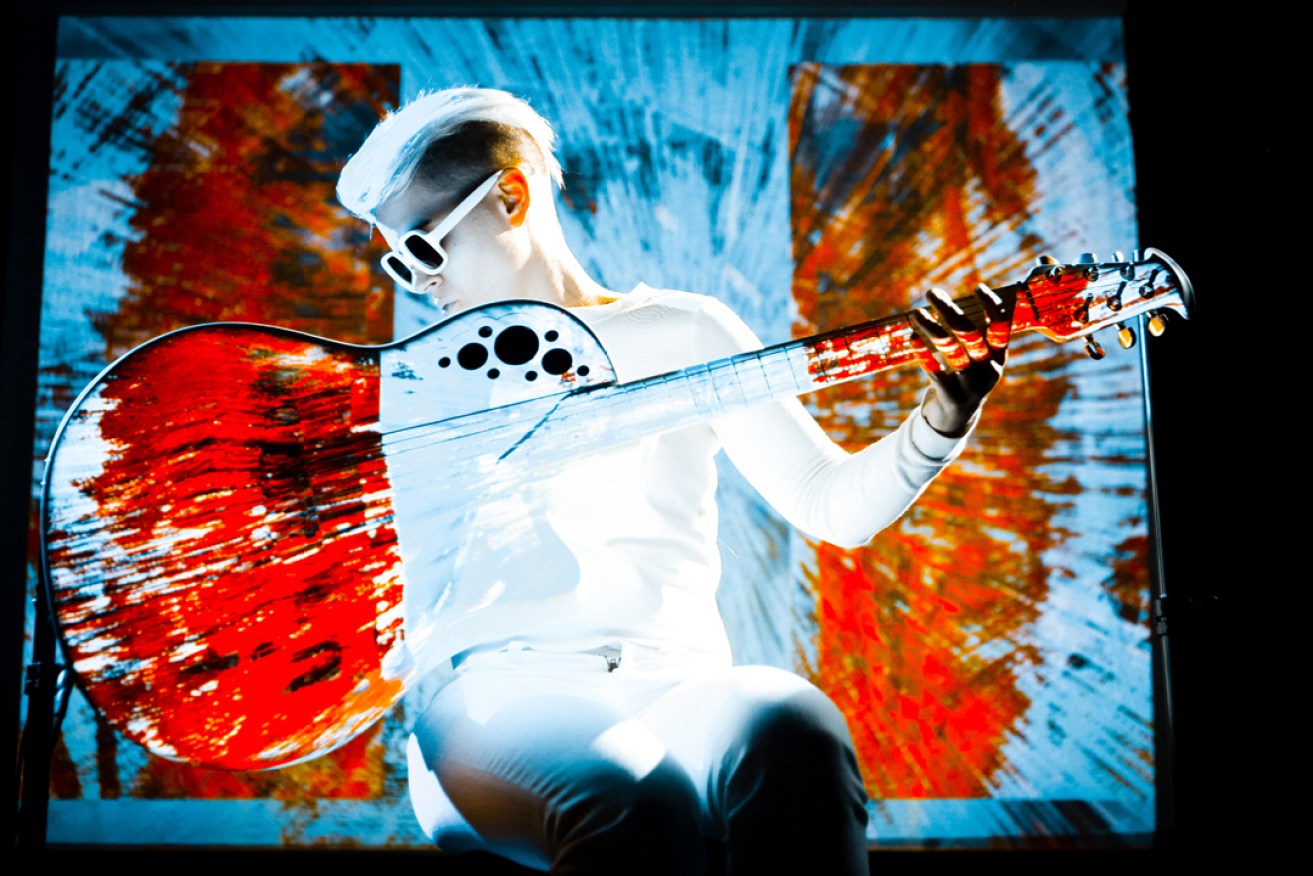Guitar Festival review: Kaki King
Visionary musician Kaki King puts her specially customised acoustic guitar front and centre in this vibrant and immersive multi-media performance.


Photo: Simone Cecchetti
The show, The Neck is a Bridge to the Body, is a high-concept projection mapping performance and perfected in the four years since it debuted in New York City.
“The guitar is a shape-shifter,” says King. “Something that plays all types of music and fills all kinds of roles. It’s not always the six-string guitar we know and love. I’ve been playing guitar for more than thirty years. It’s who I am and this project has made me even more familiar with it.”
The show starts with “In The Beginning”: whirling, pulsing golden sparks are projected onto a black screen, in front of which sits a specially customised Ovation Adamas 1581-KK 6-string acoustic guitar. Painted white, it’s a blank canvas. Colourful projections spark it into life: the genesis of the guitar as hero.
Dressed futuristically in white and wearing Buggles-style white-framed sunglasses, King wanders onto stage, acting bewildered when the audience applauds. She approaches the guitar tentatively, before moulding herself around it. It has been fixed into place by stands and screws. King laughingly calls herself the “guitar facilitator” during the entertaining interview with Julia Zemiro afterwards, and that’s exactly how it seems.
She deconstructs what it means to be a solo guitarist, plucking, strumming, tapping, pounding and scratching. The guitar takes us on a mesmerising journey that varies and builds in intensity and mood — from the driving, lively “Anthropomorph” (a collaboration with artist Shantell Martin) and the delicate, wondrous “The Surface Changes” (in which beautiful, melancholic found footage is projected onto the guitar), to the huge, belly-churning RAT-pedal-distorted “Battle is a Learning” — a perfectly calibrated menu of dishes on this visual and auditory feast.
The most important narrative voice is heard in “Roaming Guitar”; King’s Ovation Adamas tells us about its misfit teenage years in an endearingly funny autobiographical video in which it’s bullied by a pair of Gibsons. It gets away from hectoring Ovation parents, a wailing ukelele baby sibling and a grumpy Holloway Harp grandma by shutting itself away in its bedroom to listen to records. King and guitar are one.
King collaborated on the rich tapestry of images with visual performance pioneers Glowing Pictures (also collaborators with David Byrne and Brian Eno), presenting a new way of seeing the guitar. Sounds from the guitar feed into software and reflect back as visual images on a screen and we see what the guitar sounds like. In Oobleck, colourful corn-starch globs change viscosity as sound waves pulse through them, like Rorschach images of morphing globules: we are seeing sound waves. The fact that King recorded this in in her kitchen, making the cornflour globs pulse and morph on a speaker cone, tells you much about her: she is a very serious musician, but doesn’t take herself too seriously. In the interview with Zemiro she was likable and very funny.
Kaki King has played guitar since she was four-years-old, a virtuoso. In The Neck is a Bridge to the Body she stretches the boundaries of what a guitar and a solo artist can be. She does it with humanity, humour, intelligence and joy, and not least, immense skill.




